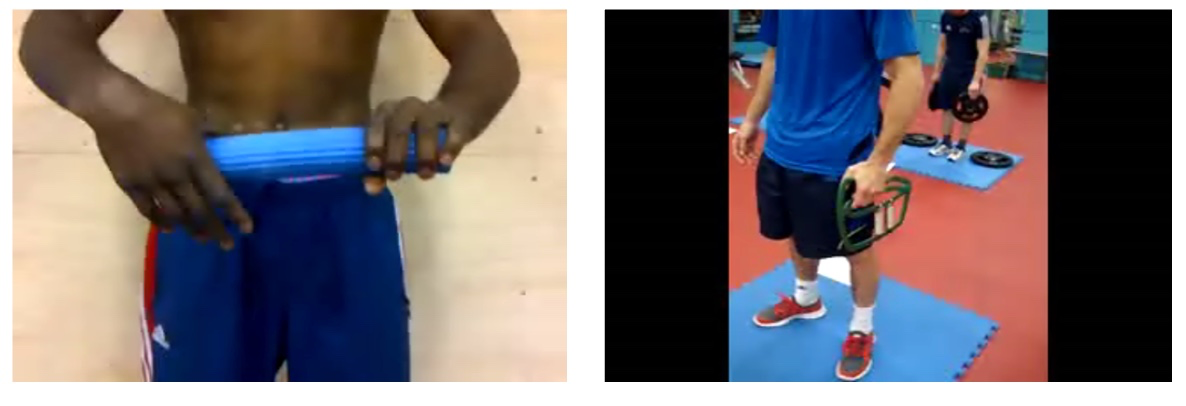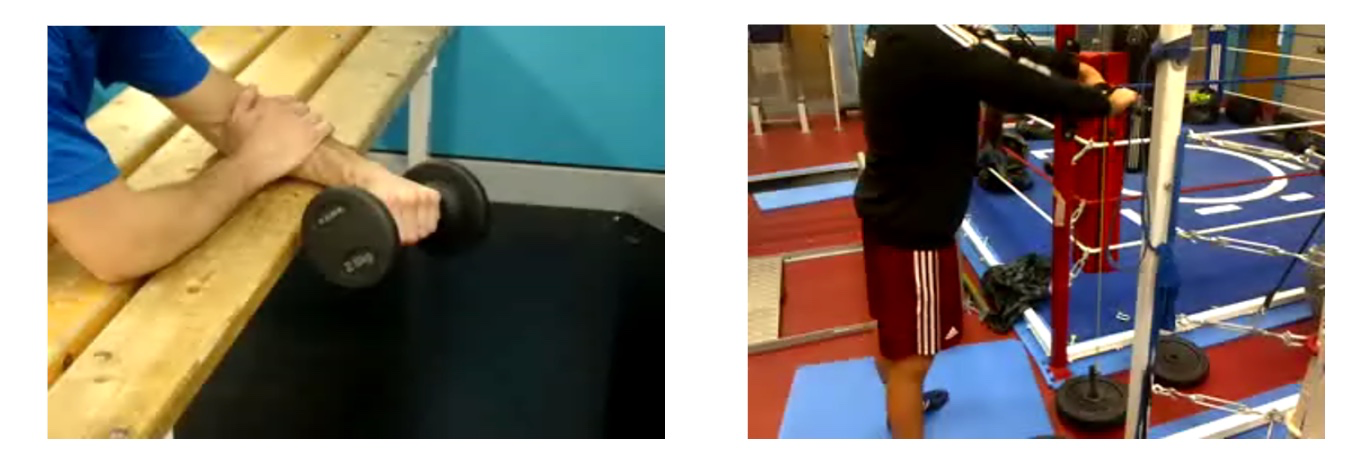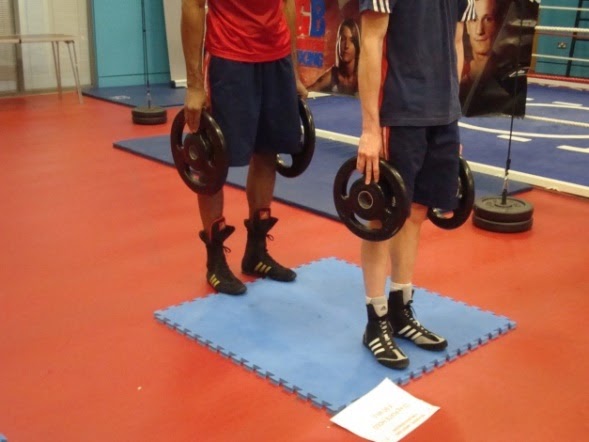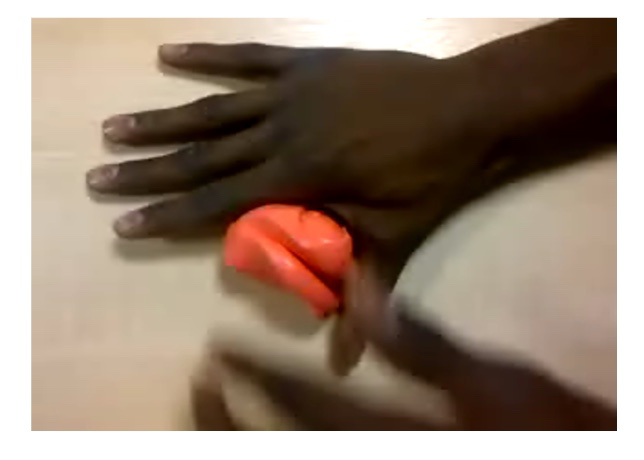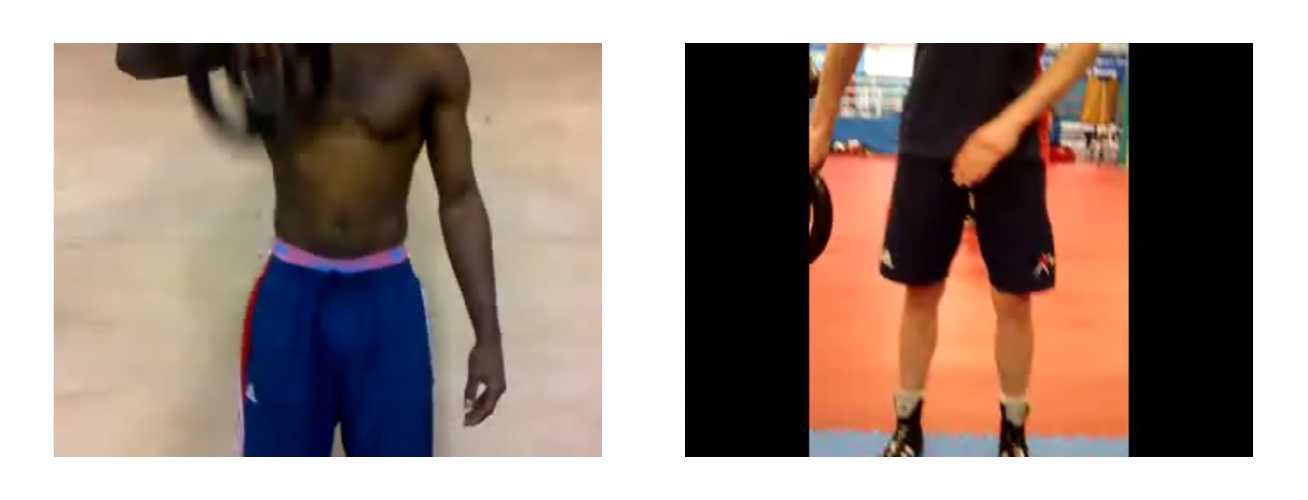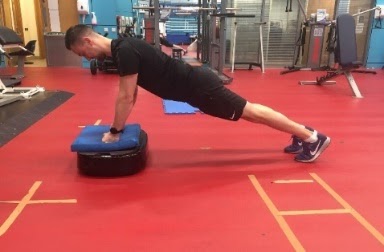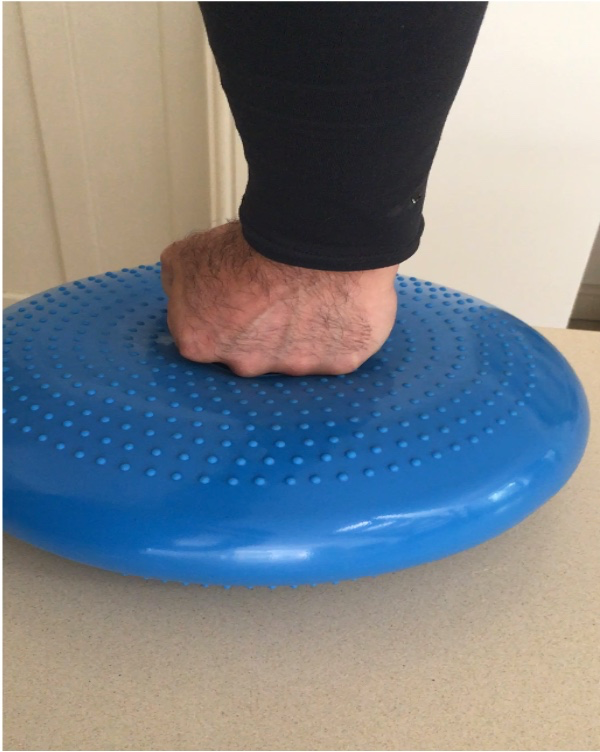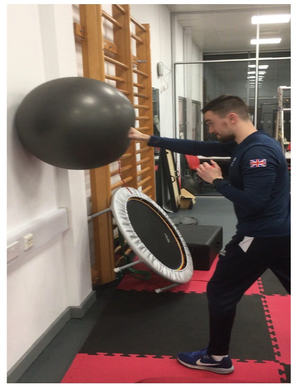Sporting Hand and Wrist - Mobility Strength and Endurance
Introduction[edit | edit source]
The hand anatomy is efficiently organized to carry out a variety of complex tasks combining intricate movements and finely controlled force production. The soft tissue structure of the hand is complicated and any injury to any of these even very small structures can alter the overall function of the hand and thereby complicate the therapeutic management[1]. Hand function and strength are important elements in day to day life and participation in sports[2]. Activities of daily living can use up to 70% of your hand motion.
Hand function and is made up of four important components:
- Mobility
- The maintenance development of movement through a specific range of motion
- Stability or Motor Control
- The maintenance or development of kinetic stability during joint static or dynamic skilled movements
- Endurance or Work Capacity
- The ability to produce or tolerate variable intensities and duration of work whilst maintaining that motor control
- Strength
- The ability to produce or tolerate maximal strength
It is also important to know and remember the average range of motion of the wrist when conducting an assessment
- Flexion - 70 to 75 degrees
- Extension - 70 to 75 degrees
- Radial deviation - 20 degrees
- Ulnar deviation - 35 degrees
Principles of Dosage in Exercise Prescription[edit | edit source]
Dosage[edit | edit source]
There are five aspects to consider when prescribing any exercise regime
- Intention of program (Endurance, strength, stability, mobility)
- Intensity
- Repetitions
- Sets
- Rest
Example below of dosage for endurance rehabilitation and for strength rehabilitation.
| Intention | Endurance | Strength |
|---|---|---|
| Intensity | Low to moderate intensity | High intensities |
| Repetitions | High repetitions - 15 | Low repetitions |
| Sets | Two to three sets | Increased sets |
| Rest | Short rest periods - 30seconds to 1 minute | Longer rests periods to allow the recovery |
Grip Strength in Day to Day Life[edit | edit source]
Daily activities require a combination of different movements in the upper limb. Hand function is an important component of these movements. The loss of grip strength is associated with a number of pathologies. Hand Osteoarthritis is a is a common chronic condition involving one or more joints of the thumb and fingers. It is associated with pain, reduced grip strength, loss of range of motion (ROM), and joint stiffness leading to impaired hand function and difficulty with daily activities [6]. Stroke is another condition that impacts the upper limb and hand function. Addressing these conditions requires an understanding of the hand anatomy and biomechanics.
There are numerous factors such as sex, age, and hand preference that contribute to the grip strength and they should be considered when making clinical decisions. The average grip strength of women is approximately 60% that of men, and for both sexes, grip strength reaches a maximum during the fourth decade of life and declined thereafter with increasing age[1].
Cold weather causes reduced muscle contraction and affects grip strength and function of the hand[1].
It is believed that the difference between the dominant and non-dominant hand in strength is 10% (known as the 10% rule). This applies to right-handed people. For a left handed individuals, grip strength in considered equivalent in both hands[1].
Measuring Grip Strength[edit | edit source]
Measuring grip strength is commonly used in research and sports to measure the efficacy of an intervention. It is a useful practice to implement in hand rehabilitation that would help on decision making and reporting outcomes.
Dynamometers[2]: The Jamar and the Takei are the most common studied dynamometers in the literature.
| Jamar | Takei |
|---|---|
| Gold standard for documenting manual grip strength | Valid and reliable tool to measure power grip |
| Adjustable anatomical rigid handle | Complacent handle shape |
| Hydraulic system | Electromechanical system |
| Analogue display | Digital or analogue display |
Important points to consider when testing grip strength[3]:
- Note the associated symptoms such as pain or instability. The timing of the symptoms also matters whether they accompany the movement or start after the testing. * The difference between the right and left hands. Consider the element of chronicity could lead to weakness due to reciprocal inhibition.
- Repeat the test for 3 times starting with the non-painful side then move on to the other hand and alternate the testing between hands for three times
- Look for the peak force (the best number that could be achieved on testing). Some people might be able to generate a high number on the strength test but then the number lowers due to fatigue or they take few repetitions to generate the force
Testing position:
- Elbow in a 90-degree angle: helps to generate the highest peak. However, having the forearm in mid-position could lead to contraction of the brachioradialis muscle and the movement will not be generated purely from the hand.
- Testing from straight elbow position and wrist in neutral. This position is recommended by Gatt [3]to isolate hand muscles.
Important points to consider when testing grip strength[3]:
- Note the associated symptoms such as pain or instability. The timing of the symptoms also matters whether they accompany the movement or start after the testing.
- The difference between the right and left hands. Consider the element of chronicity could lead to weakness due to reciprocal inhibition.
- Repeat the test for 3 times starting with the non-painful side then move on to the other hand and alternate the testing between hands for three times
- Look for the peak force (the best number that could be achieved on testing). Some people might be able to generate a high number on the strength test but then the number lowers due to fatigue or they take few repetitions to generate the force
Testing position:
- Elbow in a 90-degree angle: helps to generate the highest peak. However, having the forearm in mid-position could lead to contraction of the brachioradialis muscle and the movement will not be generated purely from the hand.
- Testing from straight elbow position and wrist in neutral. This position is recommended by Gatt to isolate hand muscles[3].
Important points to consider when testing grip strength[3]: * Note the associated symptoms such as pain or instability. The timing of the symptoms also matters whether they accompany the movement or start after the testing. * The difference between the right and left hands. Consider the element of chronicity could lead to weakness due to reciprocal inhibition. * Repeat the test for 3 times starting with the non-painful side then move on to the other hand and alternate the testing between hands for three times * Look for the peak force (the best number that could be achieved on testing). Some people might be able to generate a high number on the strength test but then the number lowers due to fatigue or they take few repetitions to generate the force Testing position: # Elbow in a 90-degree angle: helps to generate the highest peak. However, having the forearm in mid-position could lead to contraction of the brachioradialis muscle and the movement will not be generated purely from the hand. # Testing from straight elbow position and wrist in neutral. This position is recommended by Gatt [3]to isolate hand muscles.
== Rehabilitation of the wrist ==
=== 1- Power grip rehabilitation ===
1 - Rubber tools also known as flex bars. Different colours could be deployed for varying strength and targeting the wrist and forearm muscles.This exercise is going to help mobility of the wrist, it may provide a degree of stability, it wil limprove strength or endurance. Edit the exercise to incorporate pronation and supination
2 - Crushes: is another tool that could be used to improve the power grip. Intensity could be adjusted by the number of springs.This exercise, using green crushes is uses a wide grip, or power grip, to improve strength. Wrist stability entails the co-contraction of all the muscles around the wrist and the best position tends to be in a degree of probably around 30 degrees of extension.
.Other exercises using a Flexbar
=== 2 - Flexion/extension rehabilitation ===
1 - Wrist curls, in this position pictured above, focus on extension. In 30 degrees extension the power grip, in the isometric position particularly is very strong
2 - Horizontal pulley. This works into extension, both concentric (roll up), and eccentric (roll down).
=== 3 - Thumb rehabilitation ===
Plate holds - Holding a plate: there are different variations depending on the targeted muscles. The time to hold can be adjusted on the type of training e.g. conditioning or endurance, and also could be used to check the difference in the maximum hold between right and left hands. Monitoring the symptoms associated with holding the plate such as pain, the timing of the symptoms and the effect on holding can be useful data in the management.
Putty: for pinch or power grip using different variations: [1]Pinch Grip
Power grip
Flipping Plates: good exercise to improve thumb and wrist proprioception.
This is a pendular exercise creating stability through compression
=== 4 - Wrist stability ===
pertubations
=== 5 - Wrist rehabilitation for static stability ===
Punch into a bosu ball creates compression
=== 6. Wrist rehabilitation for Dynamic stability ===
# Physio Ball Punches
# Dumbbell pushups
# Trampoline punch
# Wall Push offs - This exercise focusses on maintenance of the wrist, in a neutral position. The elbow is rigid and maintained in extension.
## Variations
### Fist
### Open hand
### Hold on to a rubber ball
### Hold on to a weighted ball
Rainbow et al, 2015. They found that throughout all the motions, the ligaments are always taught. So there's always stiffness of ligaments, not all of them, you know, as you expect another joint, some would be more relaxed, some are tighter and then as you go throughout the range, some get more relaxed, some get tighter.
Kim et al, looking at the tape, again, it's something you could consider using as an adjunct as part of your intervention
== References ==
# ↑ Jump up to:1.0 1.1 1.2 1.3 1.4 1.5 1.6 Duruoz MT. Hand function. Springer-Verlag New York; 2016.
# ↑ Jump up to:2.0 2.1 Gatt I, Smith-Moore S, Steggles C, Loosemore M. The takei handheld dynamometer: an effective clinical outcome measure tool for hand and wrist function in boxing. HAND. 2018 May;13(3):319-24.
# ↑ Jump up to:3.0 3.1 Loosemore M, Lightfoot J, Gatt I, Hayton M, Beardsley C. Hand and wrist injuries in elite boxing: a longitudinal prospective study (2005-2012) of the Great Britain Olympic Boxing Squad. Hand. 2017 Mar;12(2):181-7.
# Jump up↑ Gatt I. Hand and wrist injuries: a focus on boxing. A Comprehensive Guide to Sports Physiology and Injury Management E-Book: An Interdisciplinary Approach. 2020 Nov 28:315.
# ↑ Jump up to:5.00 5.01 5.02 5.03 5.04 5.05 5.06 5.07 5.08 5.09 5.10 Gatt I. Sporting Hand & Wrist - Why Power & Pinch Grips Matter. Physioplus Course 2020
# Jump up↑ Magni NE, McNair PJ, Rice DA. The effects of resistance training on muscle strength, joint pain, and hand function in individuals with hand osteoarthritis: a systematic review and meta-analysis. Arthritis research & therapy. 2017 Dec 1;19(1):131.
# Jump up↑ Duruöz MT, Poiraudeau S, Fermanian J, et al. Development and validation of a rheumatoid hand functional disability scale that assess functional handicap. J Rheumatol. 1996;23:1167–72.
# Jump up↑ Oranchuk DJ, Drinkwater EJ, Lindsay RS, Helms ER, Harbour ET, Storey AG. Improvement of kinetic, kinematic, and qualitative performance variables of the power clean with the hook grip. International journal of sports physiology and performance. 2019 Mar 1;14(3):378-84.
# Jump up↑ Hand Grip Dynamometer. Available from:https://www.youtube.com/watch?v=-jmWNKUek3o[last accessed 28/12/2020]
# Jump up↑ Pinch grip strength putty R. Available from:https://www.youtube.com/watch?v=QxaP5P9CSWc[last accessed 28/12/2020]
# Jump up↑ Power grip strength putty R. Available from:https://www.youtube.com/watch?v=DufAYWGidsc[last accessed 28/12/2020]
# Jump up↑ Plate Flip | Better Grip | Forearm Strength | Move and Perform Better. Available from:https://www.youtube.com/watch?v=Z-qNThP5Sjw[last accessed 28/12/2020]
Spencer Wolf and Rushton https://pubmed.ncbi.nlm.nih.gov/27661792/
Calahan et al 1991 (not open) https://journals.sagepub.com/doi/abs/10.1177/036354659101900314
Kim et al 2020 (just found this one) https://pubmed.ncbi.nlm.nih.gov/30871958/
Kim et al 2019 https://www.jhandtherapy.org/article/S0894-1130(18)30090-5/fulltext
Rainbow et al (not open - maybe check on P+ resources) https://journals.sagepub.com/doi/10.1177/1753193415616939
Loosemore M, Lightfoot J, Gatt I, Hayton M, Beardsley C. Hand and wrist injuries in elite boxing: a longitudinal prospective study (2005-2012) of the Great Britain Olympic Boxing Squad. Hand. 2017 Mar;12(2):181-7.
Gatt I. Hand and wrist injuries: a focus on boxing. A Comprehensive Guide to Sports Physiology and Injury Management E-Book: An Interdisciplinary Approach. 2020 Nov 28:315.
Rice DA. The effects of resistance training on muscle strength, joint pain, and hand function in individuals with hand osteoarthritis: a systematic review and meta-analysis. Arthritis research & therapy. 2017 Dec 1;19(1):131.
Oranchuk DJ, Drinkwater EJ, Lindsay RS, Helms ER, Harbour ET, Storey AG. Improvement of kinetic, kinematic, and qualitative performance variables of the power clean with the hook grip. International journal of sports physiology and performance. 2019 Mar 1;14(3):378-84
- ↑ 1.0 1.1 1.2 Duruoz MT. Hand function. Springer-Verlag New York; 2016
- ↑ 2.0 2.1 Gatt I, Smith-Moore S, Steggles C, Loosemore M. The takei handheld dynamometer: an effective clinical outcome measure tool for hand and wrist function in boxing. HAND. 2018 May;13(3):319-24
- ↑ 3.0 3.1 3.2 3.3 3.4 3.5 Gatt I. Sporting Hand & Wrist - Why Power & Pinch Grips Matter. Physioplus Course 2020
